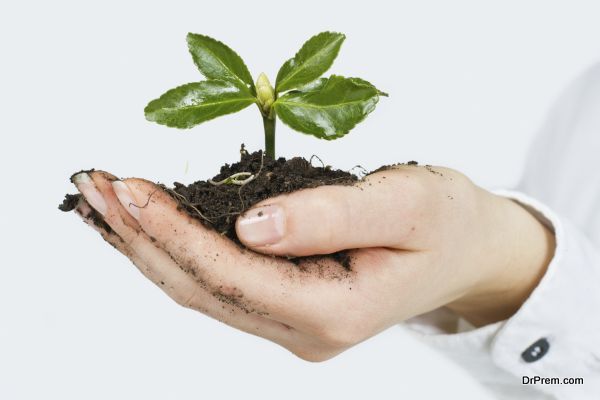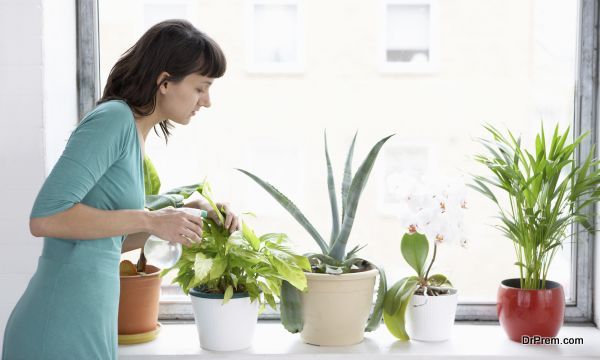Those of us who have limited outdoor space for a garden usually tend to create an indoor garden using containers. While container gardening would bring in that much needed green touch to your home interiors, you would need to note that it is not that easy maintaining these plants.
Just like in an outdoor garden, you would need to invest a fair amount of time and effort in raising your container garden in order to ensure that you are left with an aesthetically beautiful and pleasing indoor garden. Accordingly, here are Points to remember by Dr Prem Jagyasi when handling your first every container garden.
Choose Proper Containers

Anything can qualify as a container if you are able to put some soil into it and some holes at the bottom to filter out excess water. Typical examples include buckets, barrels, plastic crates, garbage pails and even plastic cubs. You can also use window boxes and hanging baskets as containers for your indoor plants.
Some points you need to consider:
Material: Natural materials are the best and safest option for your plant’s health. So stay away from containers that are coated with preservatives, or may contain toxic substances.
Size: Always consider buying a bigger pot when compared to a smaller one. Smaller pots will limit the free movement of the root as the plant grows, thus stifling proper growth. Smaller pots will also need frequent watering as they would absorb moisture quickly.
Weight: You would need to choose containers according to the area where you plan to keep them. Heavy pots may not be considered as the best option for balconies, window sills or rooftops. Use lightweight pots for the same purpose.
Prepare the Soil

Simply filling up the container with soil and then planting the seed will not help the latter grow properly. You need to prep the soil properly before putting it into the container. Ensure to add soil up to two inches from the top of the container to leave space for air and water. You would also need to add vital nutrients to the soil in the form of compost and mulch. Potted plants use up the nutrients in the soil quickly. Hence, you would need to keep on replenishing the soil with these nutrients to foster proper growth.
Start with Herbs

Most of the time, we tend to start a container garden with great enthusiasm. We tend to choose the hardest to maintain indoor plants thinking, ‘How hard would it be apart from some watering and sun exposure every day?’ Ultimately, we will end up with a nothing but empty pots as the plants wither away one after the other.
Inexperience can prove to be costly for your indoor plants. So the best way to ensure that you don’t make any mistakes when growing them is to start with a pretty easy plant like a herb. Relatively easier to grow and maintain, herbs will get you used to the daily routine of watering and caring for your plants before you move on to the bigger, more demanding species.
Choose proper fertilizers

In addition to prepping the soil and replacing it regularly, you will need to opt for a suitable fertilizer to make the plants in the containers grow to their full potential. Always choose natural fertilizers like compost which you can readily make at home. These are much better and safer alternatives when compared to chemical laced fertilizers.
In the case of a container garden, your best bet would be to choose a slow release fertilizer that gives the soil plenty of time to absorb its nutrients. This will allow the plants to enjoy the nutritional value of the fertilizer for up to 3 months or so.
Container gardens are in vogue in small urban living spaces these days. By following a few handy pointers and tips, you can make your indoor living space beautiful and natural as well with the help of these container gardens.




